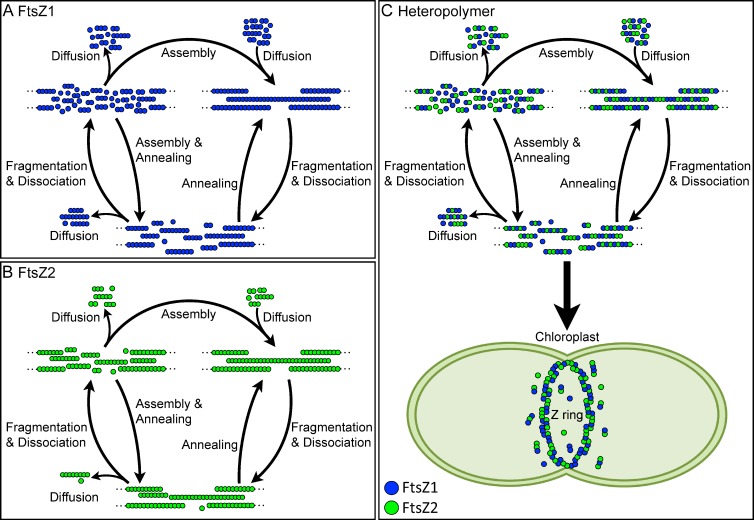Figure 6.
Working model of the intrinsic steady-state turnover of FtsZ1 and FtsZ2 homopolymers and heteropolymers in S. pombe based on FRAP analysis and models of bacterial FtsZ dynamics. (A and B) FtsZ1 homopolymers have higher rates of fragmentation and loss of subunits from protofilament ends than FtsZ2 homopolymers. The diffusible pool of small oligomers and subunits that can be recycled back into protofilaments is therefore larger for FtsZ1 than FtsZ2, resulting in higher FtsZ1 turnover. (C) FtsZ1 incorporation into heteropolymers enhances fragmentation and loss of subunits from protofilament ends. The diffusible pool of small FtsZ2-containing oligomers and FtsZ2 subunits that can be recycled back into protofilaments is therefore larger for heteropolymers than for FtsZ2 homopolymers, resulting in higher FtsZ2 turnover from heteropolymers. We hypothesize that heteropolymers represent the predominant protofilament form in the chloroplast Z ring in vivo (wide arrow). Annealing of protofilaments and addition of subunits onto protofilament ends may both contribute to turnover in all cases. Blue circles, FtsZ1; green circles, FtsZ2. Dotted lines represent continuation of FtsZ protofilaments. Important details are elaborated in the Discussion.

